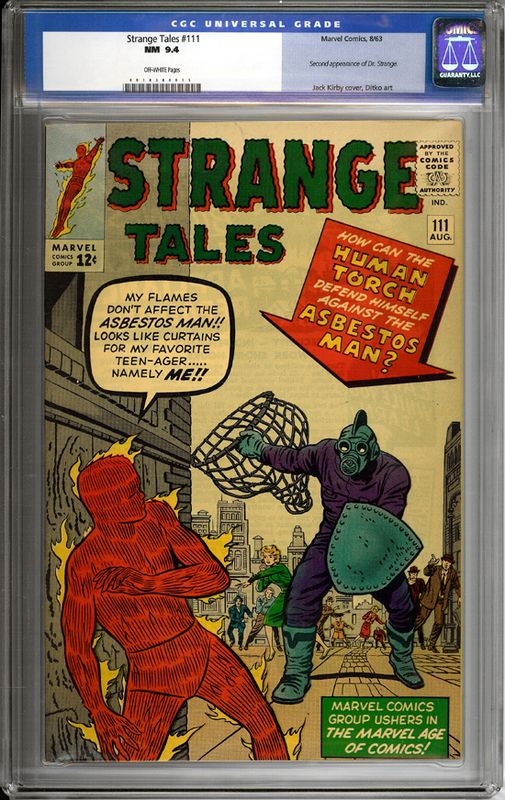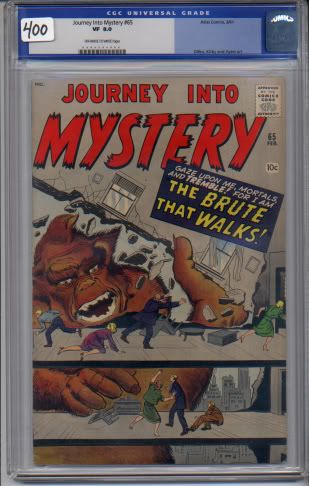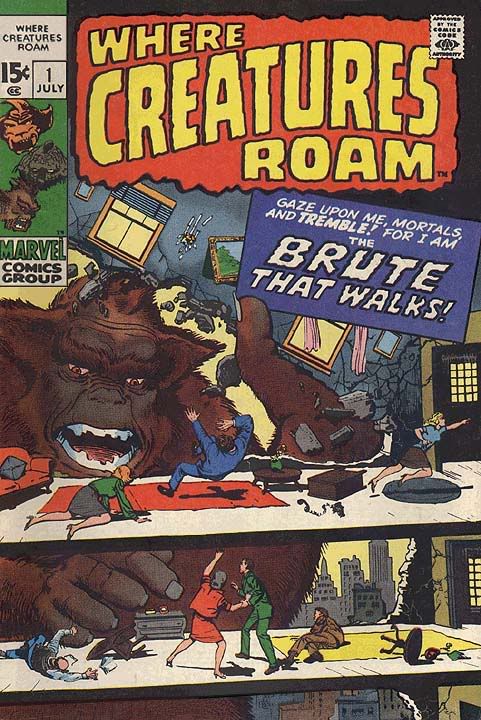-
When you click on links to various merchants on this site and make a purchase, this can result in this site earning a commission. Affiliate programs and affiliations include, but are not limited to, the eBay Partner Network.
-
Posts
5,480 -
Joined
-
Last visited
Content Type
Forums
CGC Journals
Gallery
Events
Store
Posts posted by rodan57
-
-
 I've never heard much info about that. I thought a bunch of little old ladies did the coloring for Marvel.
I've never heard much info about that. I thought a bunch of little old ladies did the coloring for Marvel. Educate me someone!

The "little old ladies" rings a bell in my mind.
The "Marvel" Kirby had little interest in inking. He would say that inking his pencils helped keep other artists in work.
He also was not fond of going back to an issue after he had finished penciling it to create a cover.
I don't remember exactly where I first read these two observations, but it would have been in Ro's "Tales to Astonish" or in Raphael & Spurgeon's "Stan Lee..." or in the "Jack Kirby Collector"... (might even be Evanier).
Given these approaches to his work, I would be surprised if Kirby paid much attention to the colouring. If I am wrong, I, too, would be interested in reading the reference source.
Dennis
-

I think it's quite a fine example of an early Marvel cover.
Bold, crude and Kirby probably did it quickly BUT it has the classic "How can >insert hero's name here< defend himself against >insert super-villain's name here<!" arrow.
-
Can't see it mattering as to the grade and I am sure that to many collectors it is a small matter as each collector has their priorities or peccadillos. But, with all things being equal, one might prefer a copy with a cover that is perfectly registered as opposed to one that is offset -- and consequently might find a better registered copy to be of greater market value.
-
I agree with rjpb. To me the Sub-Mariner doesn't 'become' the Sub-Mariner until he is published by Timely in Marvel Comics #1.
-
Then the question is why? What caused the Atlas/Marvel staff to shift focus from
horror to sf to monster? Were sales declining? Too much devilish competition? Some
sign of the times? Also, how did this correlate with the start of ToS and TtA?
Looking at the census:
ST #70 was August 1959
ToS #1 was January 1959
TtA #1 was January 1959
What was so special about mid/late 1958 to cause this?
Jack Kirby
Steve Ditko
-
Here's another example of some of the changes to the art from the original pre-hero book to the 70s reprint.
Journey into mystery 65 vs Where Creatures Roam #1. Note the difference in the body position of the guy right in front of the monster, the change in the woman by the door, and the elimination of the man on the left, replaced by a couch -- as well as the orientation of the monster's head.


It's interesting to note the changes. You can clearly see the difference in draftmanship between Jack Kirby's reinked figures and what looks to be Marie Severin's 'new' characters.
-
Shall we play: what if?
If pressing were to be suddenly detectable 98% of the time and agreed to be considered restoration by CGC, would CGC be willing to initiate the marketplace upheaval that would be bound to ensue?
I believe detectable pressing would work to dissuade future pressing, but a lot of books would find their way out of a blue label and into a purple one over the next few years. Especially should it prove necessary to reslab books after seven years or so. The purple label could kill a lot of aggregate market value very quickly.
But if pressing is restoration (and I think it is), could it not be viewed as suggested in an earlier post by Burntboy as a less egregious form of restoration?
Could a pressed book fit comfortably in a blue or green labeled slab with the notation "pressed"? Would this lessen the integrity of a blue label?
p.s.
I am really playing the devil's advocate with myself, here, as I am not a fan of any type of restoration, short of the conservation necessary to keep a very old and very damaged book 'alive'. I am still worried that pressing might structurally weaken a comic book over the long term. (With the relatively recent historical introduction of pulp paper and its fragility, I worry that damage might be done on a molecular level and only become apparent as years pass.)
-
I think a problem of provenance is created when some books are listed as File Copies and some as Signature Series.
When I see a Stan Lee signature in the Signature Series, I don't 'see' a book that was once owned by Stan Lee, but a book perhaps signed at a convention at the request of a collector.
Is there any other evidence of provenance that goes with such books?



Do people listing on Comiclink even care about GPA?
in Comics General
Posted
I agree. Give me more information and take out the guess work.
Let me see all of the book and then let me decide the relationship of GPA to what I view in front of me. I'd pass on fewer books that way.